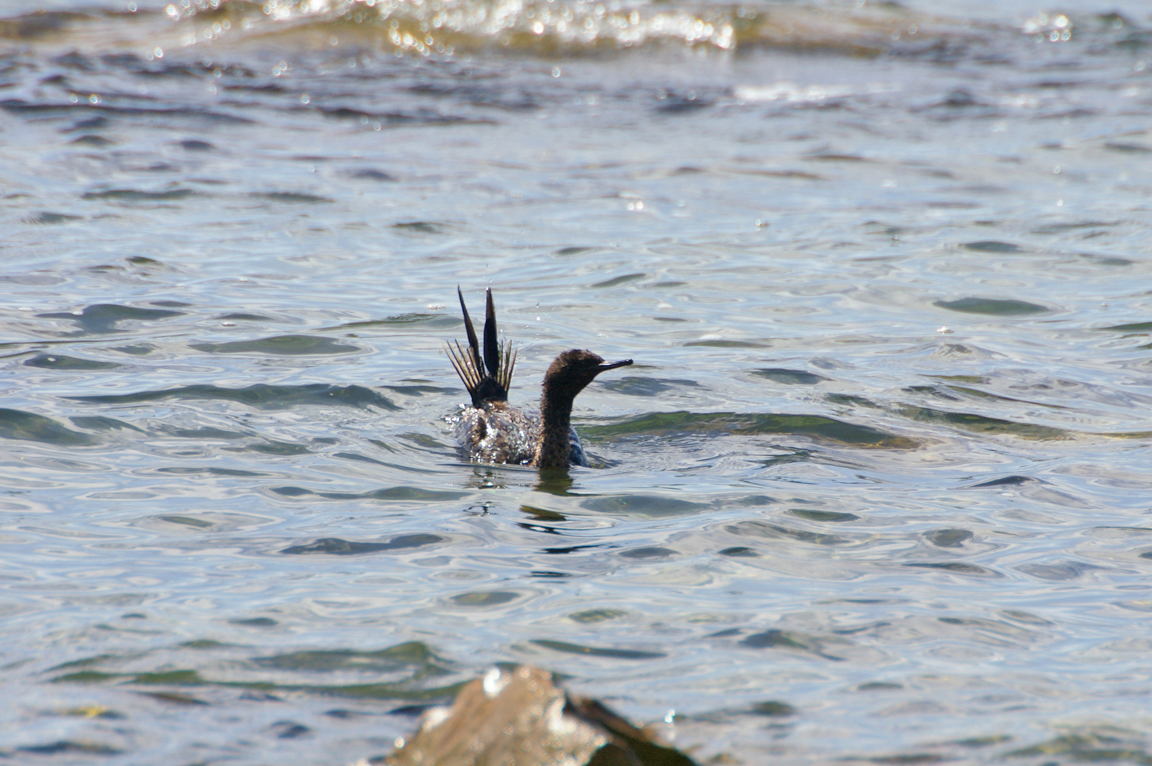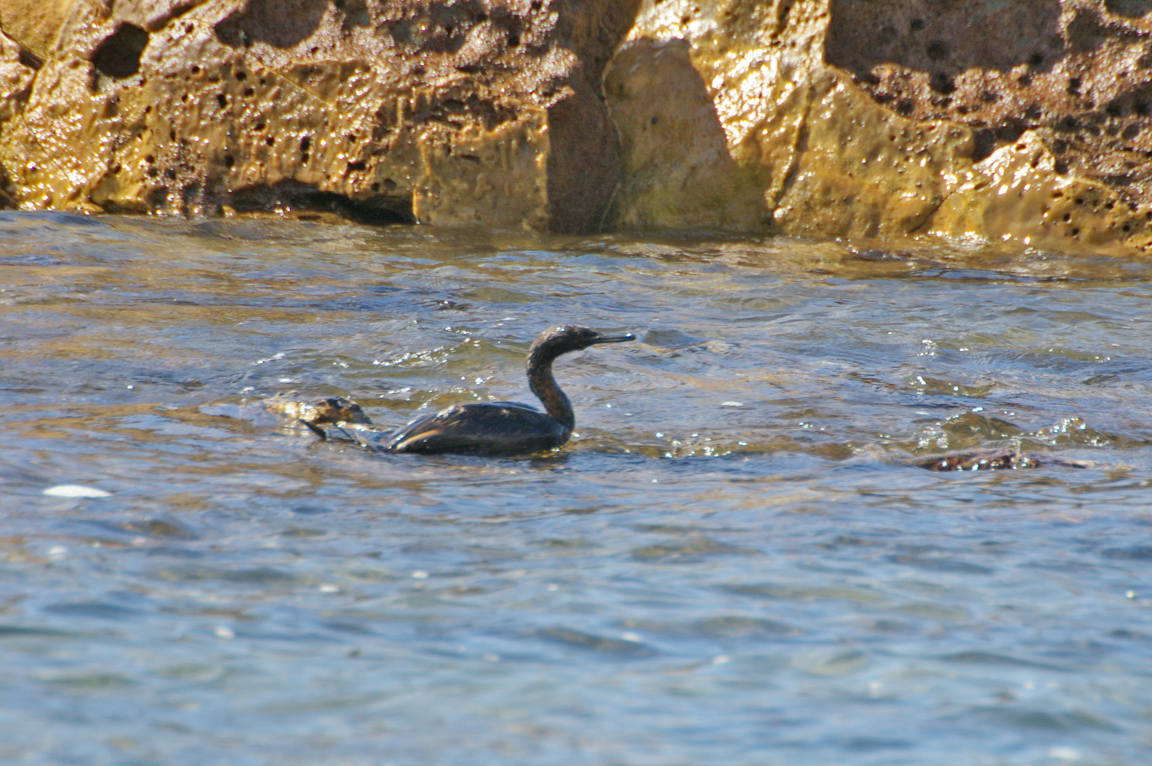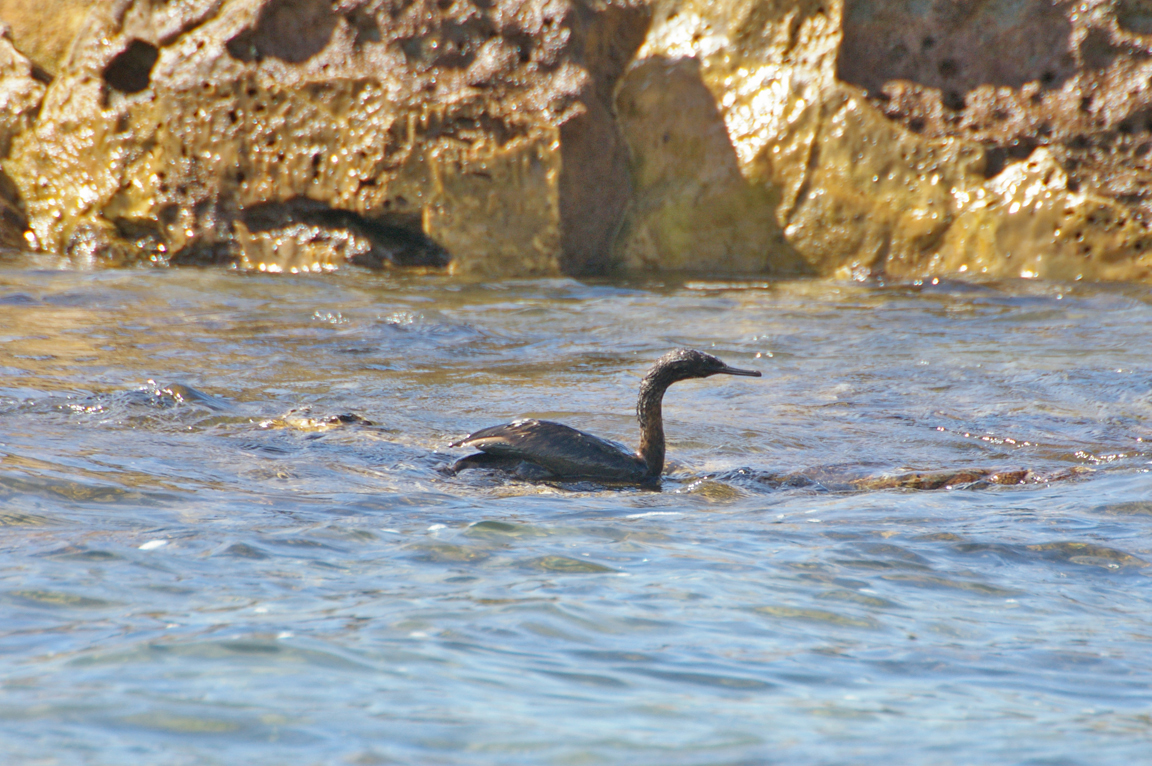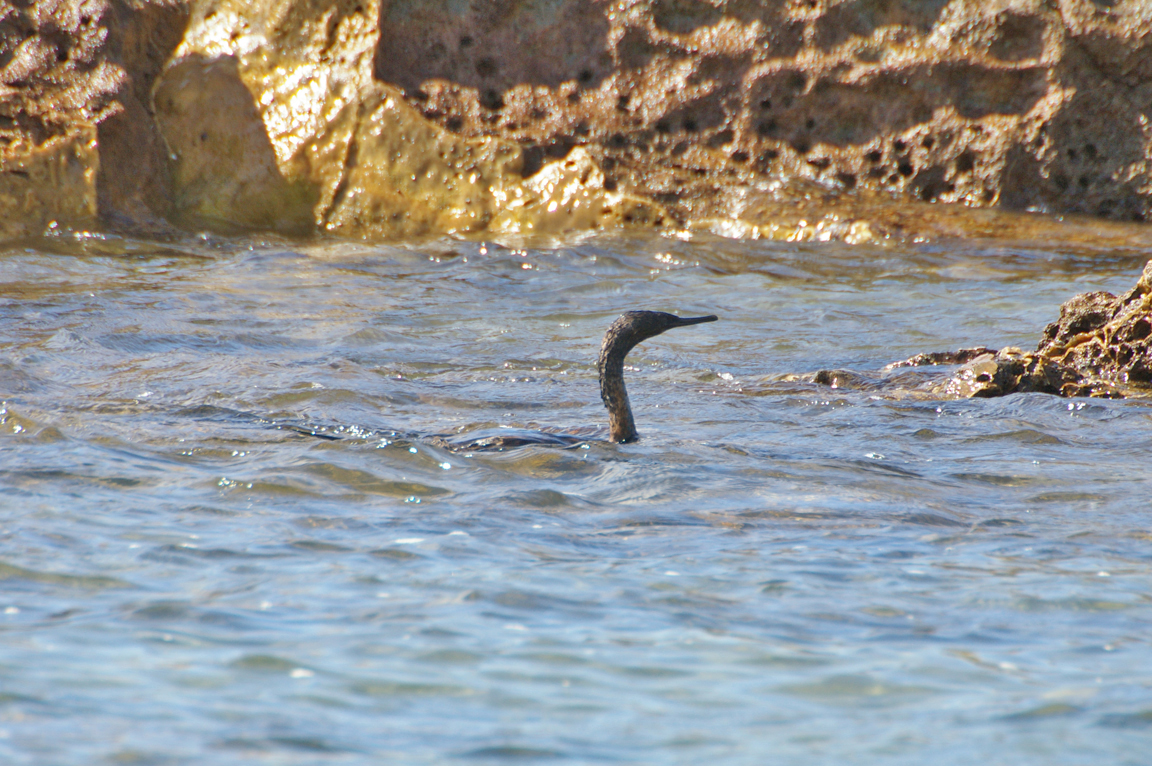|
|
|
 |
Pelagic Cormorant
|
| Phalacrocorax pelagicus | |
The Pelagic Cormorant is a small, slender cormorant of the Pacific Coast. Although it is exclusively marine in habits, its name is misleading, since it prefers inshore areas rather than the open ocean.
Interesting Information
-
The Pelagic Cormorant uses its own guano to solidify its nest materials and to cement its nest to the cliff face.
-
The Pelagic Cormorant is among the least gregarious or social of the cormorants, nesting on steep cliffs along rocky and exposed shorelines, either in loose colonies or far from nearest neighbors.
-
It can dive as deep as 100 feet in coastal waters to feed on the sea bottom.
-
A group of cormorants has many collective nouns, including a "flight", "gulp", "rookery", "sunning", and "swim" of cormorants.
Description
Adult Description
-
Large, dark water bird; small to medium-sized cormorant.
-
Long body and long, slender neck.
-
Slender bill is blunt or hooked at tip.
-
Length Range: 66-74 cm (26-29 in)
-
Weight: 2040 g (72 oz)
-
Size: Large (16 - 32 in)
-
Color Primary: Green, Black, Sheen or Iridescence
-
Underparts: Black
-
Upperparts: Black with metallic green sheen.
-
Back Pattern: Solid
-
Belly Pattern: Solid
-
Breast Pattern: Solid
Sex Differences
Sexes similar.
Immature
Immature brownish and lacks crests or glossy plumage of adult.
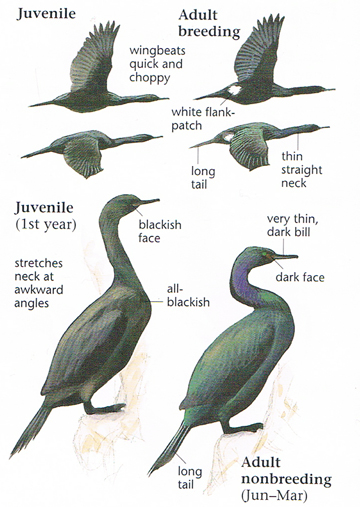
Photo taken from: The Sibley Field Guide by David Allen Sibley
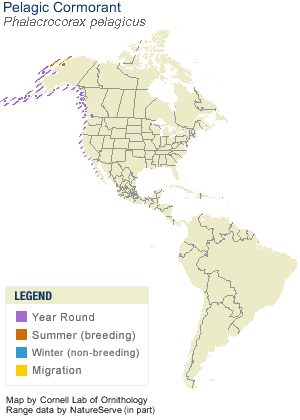
© 2003 Cornell Lab of Ornithology
|
Habitat |
|
Found in inshore coastal waters. Breeding and roost sites include rocky habitat along outer coast, bays, inlets, estuaries, rapids, coves, surge narrows, harbors, lagoons, and coastal log-storage sites. |
|
Behavior |
|
Dives from the surface of the water and chases prey under water. Grabs fish in bill, without spearing it. |
|
Food |
|
Fish and marine invertebrates. |
Taxonomy
| Kingdom: | Animalia |
| Phylum: | Chordata |
| Subphylum: | Vertebrata |
| Class: | Aves |
| Order: | Suliformes |
| Family: | Phalacrocoracidae |
| Genus: | Phalacrocorax |
| Species: | Phalacrocorax pelagicus |
| Subspecies: | Phalacrocorax pelagicus pelagicus |
| Phalacrocorax pelagicus resplendens |
Similar Species |
|
|
Bird Sound |
|
Low groans, croaks, or hisses. |
|
Eggs look like this |
|
Photo taken from: ARCTOS Collaborative Collection Management Solution |
